How To Apply Concealer The Right Way
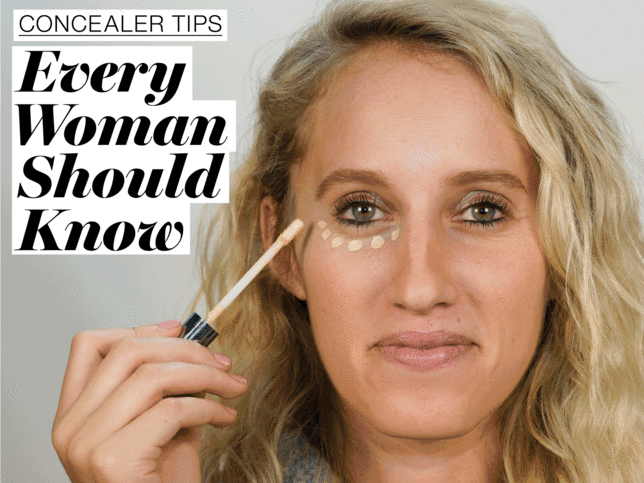
Wondering how to apply concealer correctly? The way you apply your concealer is just as important as the concealer itself. You can have the best concealer and foundation in the world, but if you apply it incorrectly, it does more harm than good. Think: Flaky patches, exaggerated fine lines, and big red pimples that show up an hour after you spent just as much time trying to hide them. Trust us, we’ve been there, and it’s third circle of hell (right behind a chipping your polish right after a mani and a bad haircut).
How to Apply Concealer the RIGHT Way: 4 Pro Tips
Whether you’re covering up a breakout or trying to make dark circles disappear, there’s a specific way to do it for maximum success. We tapped the experts to reveal some tricks of the trade for perfecting your concealer game. Here’s how to apply concealer correctly when you want to …
1. Cover Up Undereye Circles
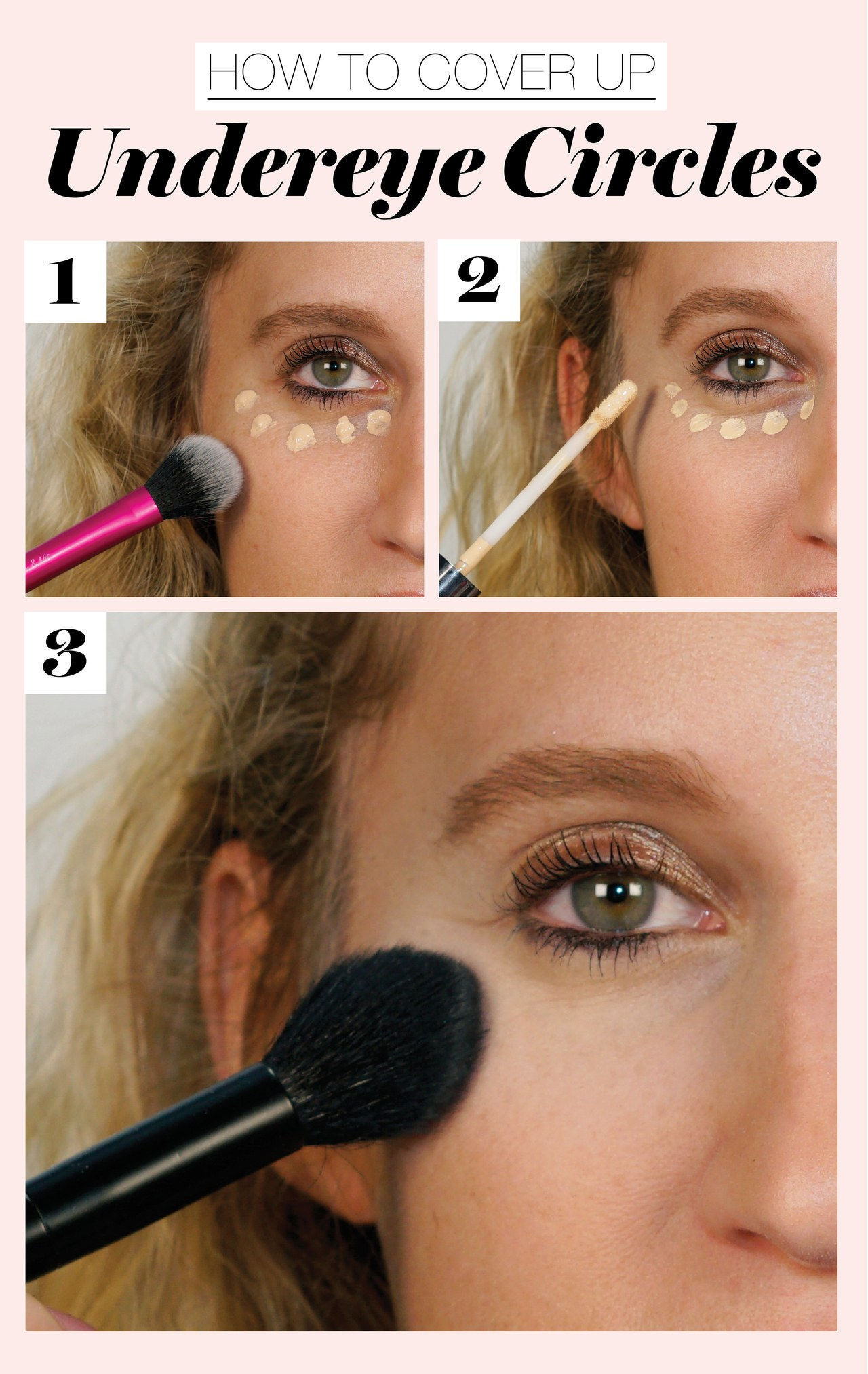
Repeat after us: Order is everything. “One of my favorite tips to hide unwanted dark under eye circles is using liquid foundation first before applying an undereye concealer,” says celebrity makeup artist Laura Geller. “It provides a base to blend with the concealer for the perfect amount of coverage.” After that you want to apply your concealer in a patting motion, then press it in with a concealer brush or beauty blender. But don’t smear or drag it! It’ll keep your concealer from caking and creasing. A good base is key when it comes to how to apply concealer under eyes.
Also advises Geller: “Make sure you also apply it on the inner corners of your eyes, too, not just underneath And avoid using concealer past your smile line, as this will enhance any crow’s feet you may have.” Last step: Sweep on a light, oil-absorbing setting powder to set your concealer in place so that it lasts all day.
2. Conceal Redness Around Your Nose
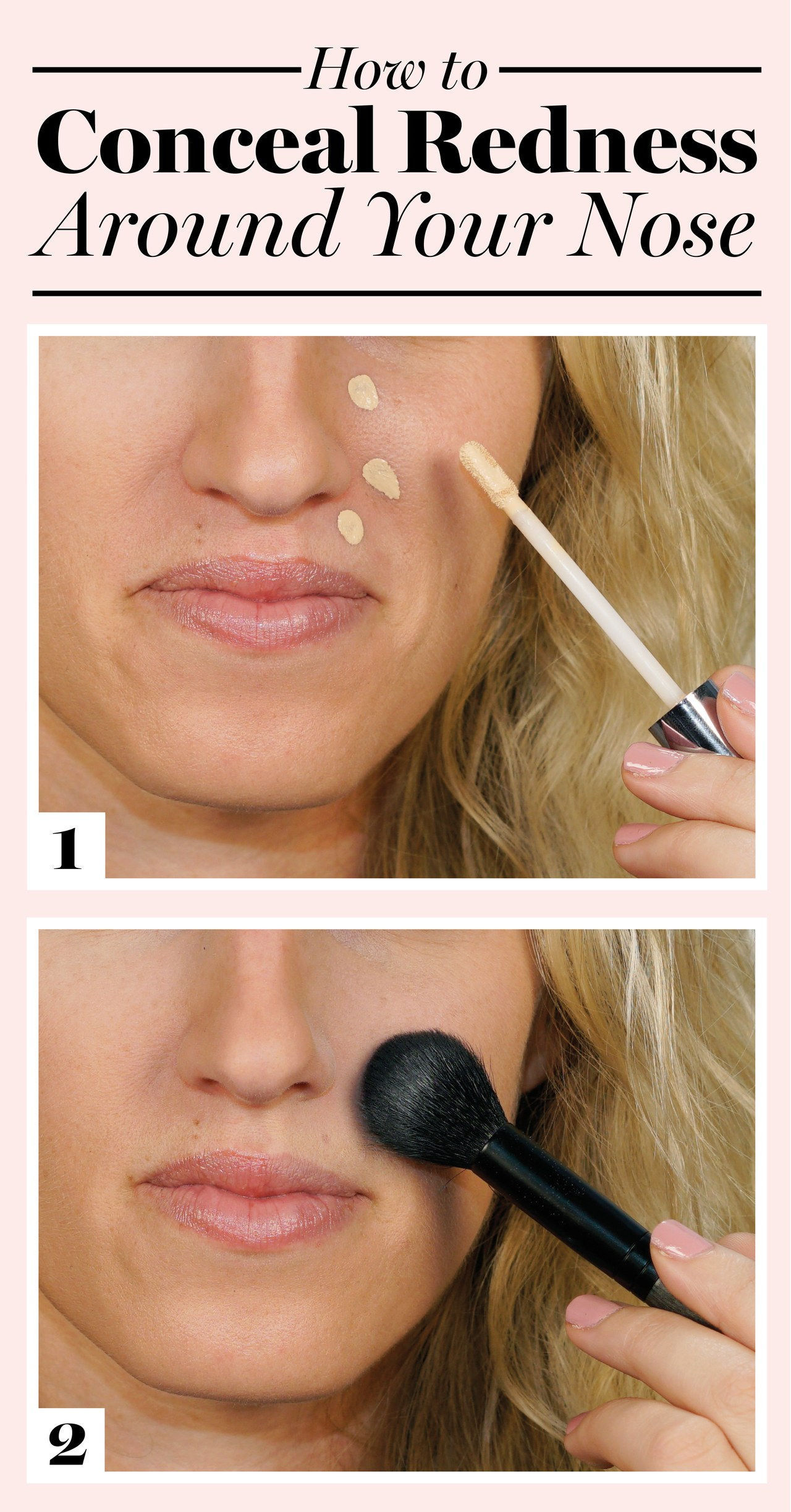
No matter how many times we dab concealer here, it never seems to stick—and we’re sure we’re in good company. That’s where setting powder comes in. “Again, my trick is to always use an oil-absorbing setting powder after you apply your concealer,” says Geller. “Makeup tends to come off the nose area more quickly, especially for me around allergy season. So you want to make sure the concealer is properly set in place to keep any redness hidden throughout the day.”
In the winter, also make sure to moisturize this area beforehand to keep dry spots and flaking in check. (See our best winter skin-fix advice and list of favorite moisturizers for more deets.)
3. Hide Breakouts
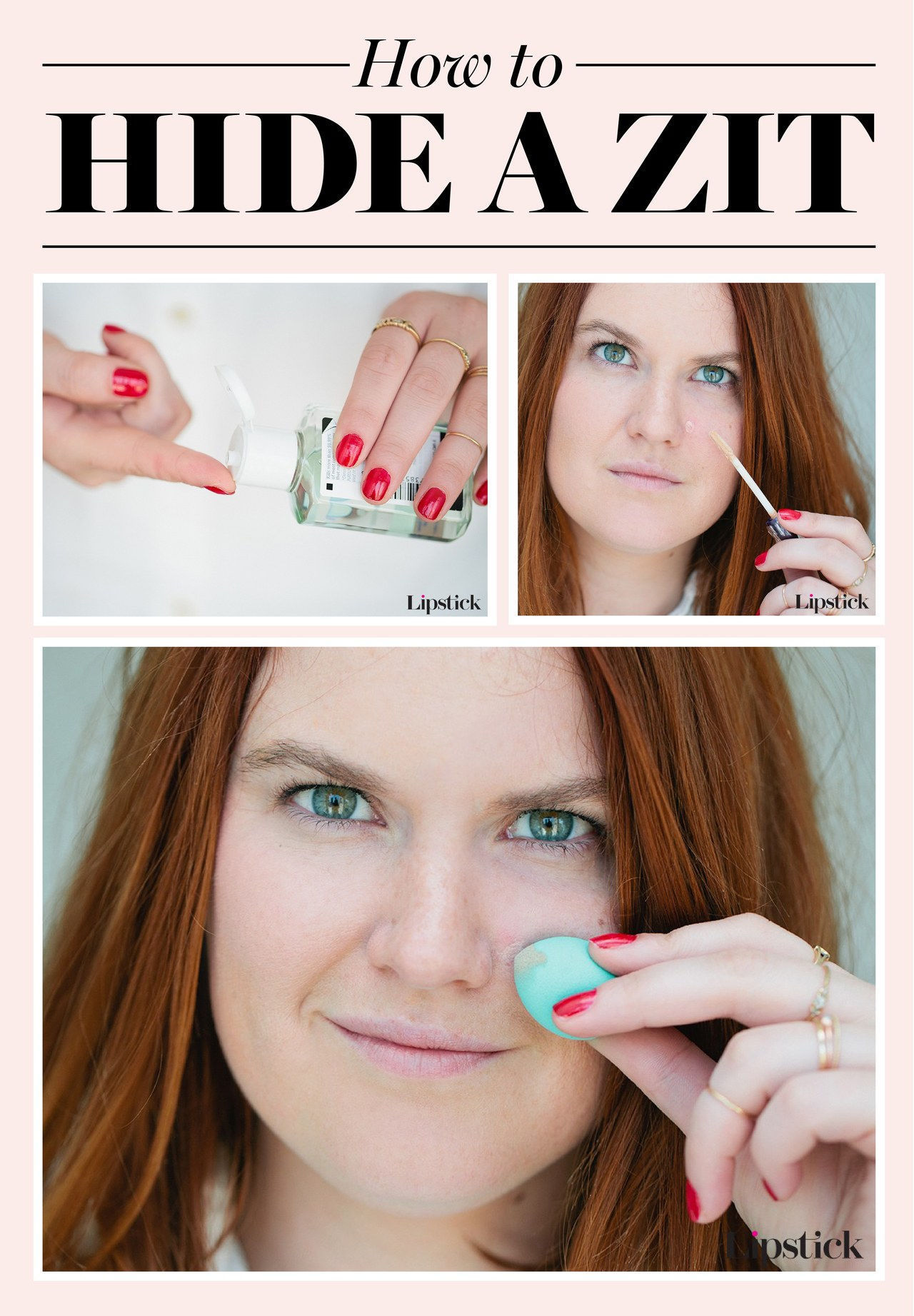
This one is probably the most common cover-up concern, and often the hardest. The good news: Urban Decay founder Wende Zomnir has a nifty layering trick to get smooth coverage on breakouts, and yes, it truly works. “I put Urban Decay Eyeshadow Primer Potion on blemishes before applying concealer, she says. “The primer restores the velvety texture to the blemished skin, so concealer has something to stick to.”
The full how-to? Start by sanitizing the zit with a blue light device or (if you don’t have one) hand sanitizer, recommends makeup artist Daniel Martin . Follow that with the primer, then concealer, then foundation. Yeah, it’s a lot of extra steps, but if it means your pimple won’t show up during a midday makeup meltdown, we say it’s worth it.
4. Cover Up Scars
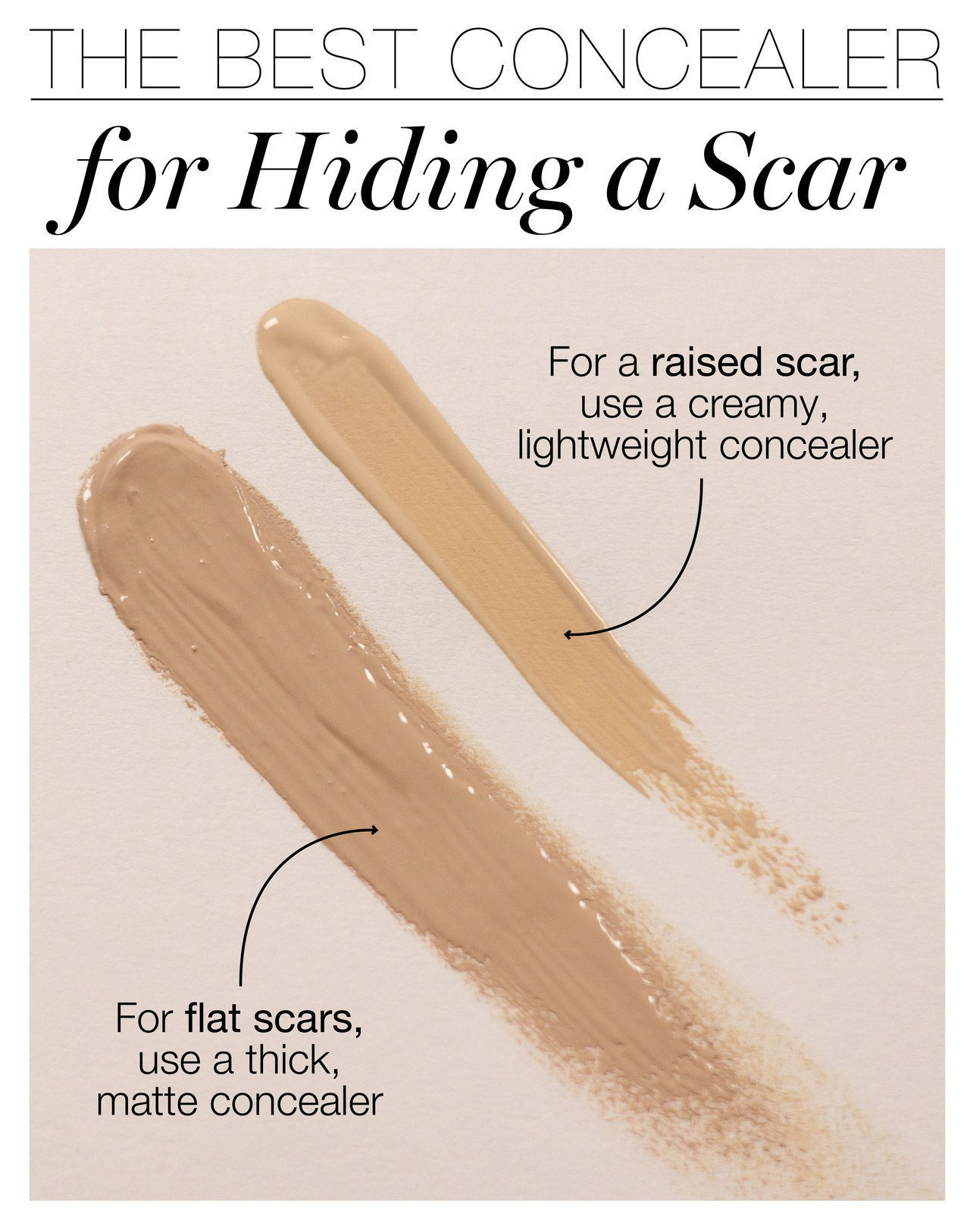
First thing’s first: “Assess what type of scar it is—raised or flat,” says Geller. That’ll determine what kind of formula you should be using. “If your scar is raised, I always recommend using a creamy, lightweight concealer,” she says. “For flat scars, you want to use a thicker, more matte formula.” Two we love: Glossier Stretch Concealer is a great lightweight option and Becca Ultimate Coverage Concealing Crème gives you thicker, creamier coverage. And remember, for both, always use a setting powder to keep it in place.
6 Concealer Mistakes to Avoid
Even with our best effort and best products, sometimes our concealer application just doesn’t look right. It might be, then, that you’ve fallen prey to one of these common concealer mistakes. Here are six things makeup pros say we’ve been doing wrong with concealer thus far, and how to make things right once and for all.
1. Using the Same Concealer for Dark Circles and Pimples
Unfortunately, it’s a rare concealer that performs equally well on all types of flaws. How to use concealer and foundation to hide a pimple is different than how to apply concealer for dark circles, for example. Not all types of concealers are created equally.
For the best coverage, you probably need to choose one concealer for blemishes and dark spots and another for under-eye circles. “Under-eye concealer should be less dry and thick in texture and consistency compared to pimple concealer,” explains celebrity makeup artist Mai Quynh . “You want to make sure your pimple concealer stays put, while your under-eye skin is delicate and thinner, and you want a concealer that won’t settle into fine lines.” So think rich and almost pasty for spot concealer (a makeup-artist favorite: Cle de Peau Concealer) and something light, fluid, and buildable for circles (like Nars Radiant Creamy Concealer).
2. Applying Concealer at the Wrong Time
Some mornings, we literally can’t function until those lingering pimple marks are covered up (#theworst). But in most cases, it’s actually better to apply foundation first—even if it’s just a light layer on the areas that need it most. By minimizing flaws (and surprisingly fully hiding some of them), this reduces the amount of concealer you end up needing to apply. That means a more natural finish in the end—plus less overall makeup on days you want to feel fresh-faced. “I only recommend using concealer before foundation when you have a lot of blemishes to cover and you need to use tons of thick, correcting concealer for coverage,” Quynh tells us. “Then you can lightly stipple or dab foundation on top of the concealer for extra coverage and blending.”
3. Not Using the Right Color to Battle Your Dark Circles
If dark circles are your main concern, combat them with a peach-toned concealer. Makeup artist Katie Jane Hughes suggested that if you’re looking to hide your dark circles, don’t start with foundation or concealer first. Instead, pick up a peach-toned concealer, like Becca Cosmetics Backlight Targeted Colour Corrector , to help balance out the blue. Then, once the peach is well-blended, go over that with the concealer you use on the rest of your face. This will ensure those darker areas are well-hidden.
4. Relying On Your Fingers Alone
Fingers: They’re so handy and never require brush cleaner. Totally get it. And using them to apply concealer can work just fine. In fact, when it comes to the delicate skin under your eyes, the warmth of a finger can help warm makeup so it blends on more easily and seamlessly. But we all know expert blending is where the makeup magic really happens. In the case of dark circles, that involves going in with a dampened Beautyblender Micro Mini (or similar mini sponge) after you’ve dabbed on concealer, to smooth every last crease and edge and truly look like you’ve achieved more than eight hours sleep. “This will also pick up any excess concealer, which is what can turn cakey as the day goes on,” explains celebrity makeup artist Nick Barose . (So this is the step we’ve been missing all these years.)
As for blemishes and dark spots, fingers really aren’t the best concealing tool. You need something much more targeted to avoid creating an obvious halo of makeup around the area—a brush with a stiff, pointed tip (Barose swears by a Laura Mercier Secret Camouflage Brush . This will let you deposit a tiny bit of concealer in the center of the spot, then almost microscopically stipple-blend it outward until any redness or darkness has been blended away. For larger dark patches, reach for that Beautyblender Mini again; it’ll help you layer on enough concealer to offset the dark pigment while blending the edges believably into your face/foundation.
5. Not Setting Your Concealer with Powder
As with everything pertaining to looking good, it’s all about layering. Sometimes even the most stay-put concealer needs a crucial final step: powder. It’s the best way to lock that color in place so it’s going nowhere. “With newer pimples the skin can be taut, so setting concealer with powder is important so it won’t move,” says Quynh. Once you start treating the pimple (and picking at it, because you never learn), you may want to skip this step. “Some pimples can be drier—the skin around or on it, because it’s been treated with salicylic acid, so adding powder may make it look especially dry,” Quynh says. “In this case, less is more and you can skip the powder.”
Note, though: One area to be cautious with powder is around your eyes. You can still set your under-eye concealer with powder if needed, but do so sparingly, avoiding the outer eye where it can settle into and play up fine lines. And opt for a lightweight, translucent brightening powder instead of anything heavy, matte, and oil-absorbing.
6. Keeping Your Concealer for Past Its Expiration Date
Because concealer is often administered in tiny doses, it’s possible to (embarrassingly) realize you’ve been using the same tube for … er, years. This will likely not kill you, but it also means you’re probably no longer getting the lovely results that made you select this formula in the first place. “Over a long period of time, some [concealers in tubes] will start to break down and may darken or appear discolored, or even separated,” says cosmetic chemist Jim Hammer. “Or the product may begin to dry up. It might not smell right, or it might feel oily, or grainy, or have other issues.” All are signs it’s time for a fresh start. Likewise, if at any point you notice your concealer is looking more orange or just doesn’t match your skin like it used to, toss it. “Changes in color are often indicative of problems in the product—microbial growth, oxidation—so that’s a good indicator that it’s time to buy a new tube,” Hammer says. “Most of these products are designed to last for two years unopened on the store shelf, but it’s probably a good idea to use them up within six to nine months after opening.” Riiiight. We might have had our favorite one just slightly longer than that.
Related Stories:
-8 Mistakes You’re Making When Putting on Makeup
-How to Use Concealer to Cover Up Dark Circles, Breakouts, and More
-20 Concealers That’ll Legit Hide Anything, According to Sephora Reviews
WATCH: A Quick Updo and Concealer Add Pop for that Big Event

